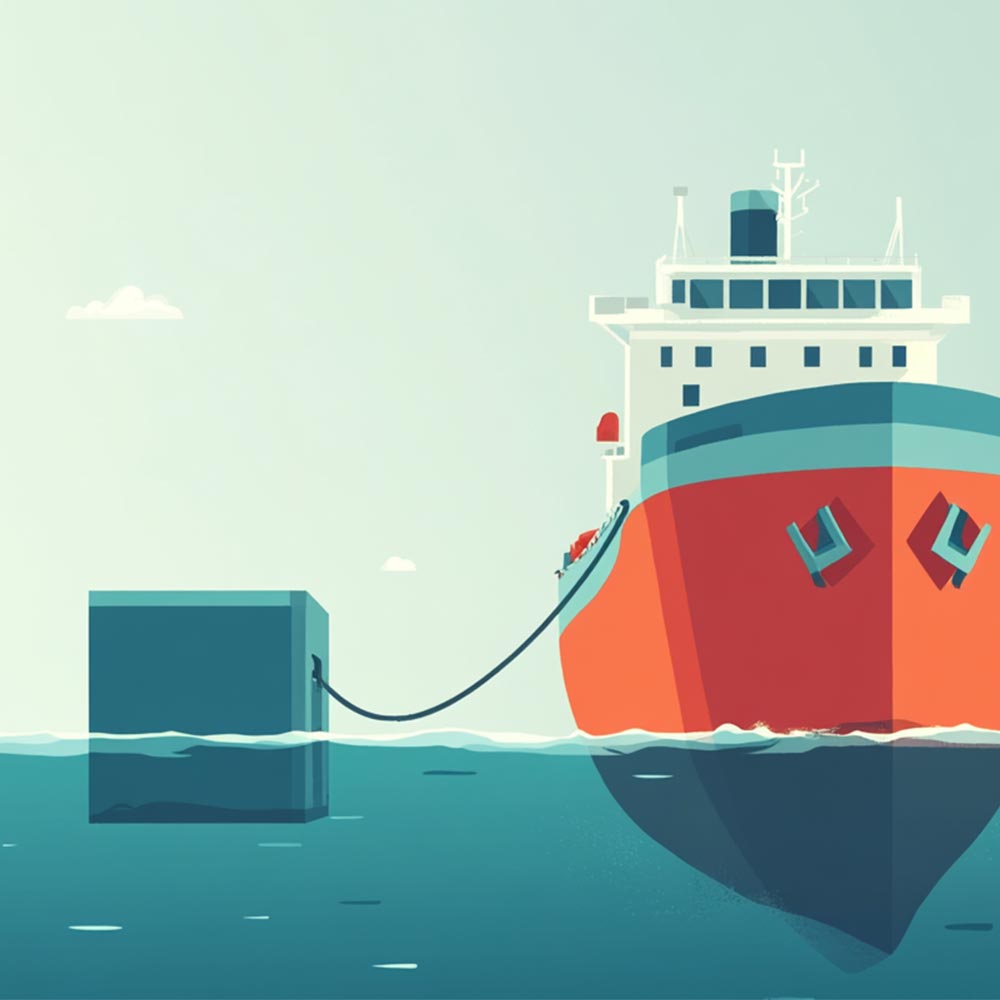Nanotextures solve a historic problem
Nanotexturing that prevents scale forming on the inside of pipes can reduce plant maintenance costs significantly
New renewable energy hydrogen generation projects highlight the potential for sustainable offshore hydropower plants.
The freighter moves through the Atlantic waters, emitting nothing but water vapour. Midway through its journey, it needs to refuel—with green hydrogen produced without fossil fuels. The hydrogen generator it relies on floats on the sea, powered by wind energy. This is an example of how green hydrogen ships could sail without needing to make port stops and without emitting greenhouse gases. Offshore hydrogen generators are a technology closer to reality than one might think, as demonstrated by prototypes already being tested in open waters. Here, we explore this potential paradigm shift in maritime transport.
Before delving deeper, it is important to understand what green hydrogen is. It is produced through electrolysis, a process that separates hydrogen and oxygen molecules from water using renewable energy. Green hydrogen can be used to generate electricity via batteries or as a direct fuel source. As we have mentioned in previous articles, this gas is particularly useful for powering heavy machinery and vehicles, such as agricultural tractors, but also for green hydrogen ships.
Green hydrogen ships are already a reality. Since 2024, San Francisco Bay has been home to a hydrogen-powered catamaran designed to replace diesel-powered vessels in the medium term. This pilot project involves a vessel capable of travelling up to 500 kilometres and operating for 16 hours before refuelling. The catamaran uses hydrogen fuel cells to generate electricity, emitting only water vapour as a by-product.

Now, let us envision a future in which electric ships use green hydrogen as a fuel for navigation. Ports would need to be equipped with hydrogen refuelling stations. However, since green hydrogen is derived from water and renewable energy, offshore hydrogen generation plants could be installed, using seawater and wind power—two abundant resources in the oceans. Initial prototypes suggest that this technological approach is viable.
As mentioned, pilot tests of offshore hydrogen plants are already underway. One of the first prototypes was launched by a French company, which inaugurated its first green hydrogen production plant, Sealhyfe, in 2022, located 20 kilometres off the French Atlantic coast. With a hydrogen production capacity of 400 kilograms per day and a 1 MW electrolyser, the project began operating in June 2023 on a 200-square-metre platform connected to an offshore wind turbine. It produces green hydrogen by electrolysing seawater using renewable energy.
According to the project developers, the platform has already demonstrated its ability to produce green hydrogen autonomously. Once the test phase is complete, the aim is to install a plant capable of generating the equivalent of 10 MW of energy off the Belgian coast by 2026
In addition to hydrogen generators for ships, there are other offshore green hydrogen projects designed for industrial and commercial applications. One such initiative is the H2HEAT project, led by the PLOCAN platform and funded by European programmes. This project will produce green hydrogen to heat buildings such as hospitals, supporting the EU’s zero-emissions policies.
Regardless of its origin, green hydrogen has the potential to power a wide range of transport systems beyond hydrogen ships. Hydrogen-powered trains and planes are also emerging alternatives, as discussed in a previous article. If you would like to learn more about the potential of green hydrogen, please subscribe to our newsletter at the bottom of this page.
Sources:
All fields are mandatory.
Read the most discussed articles
{{CommentsCount}} Comments
Currently no one has commented on the news.
Be the first to leave a comment.
{{firstLevelComment.Name}}
{{firstLevelComment.DaysAgo}} days ago
{{firstLevelComment.Text}}
Answer{{secondLevelComment.Name}}
{{secondLevelComment.DaysAgo}} days ago
{{secondLevelComment.Text}}